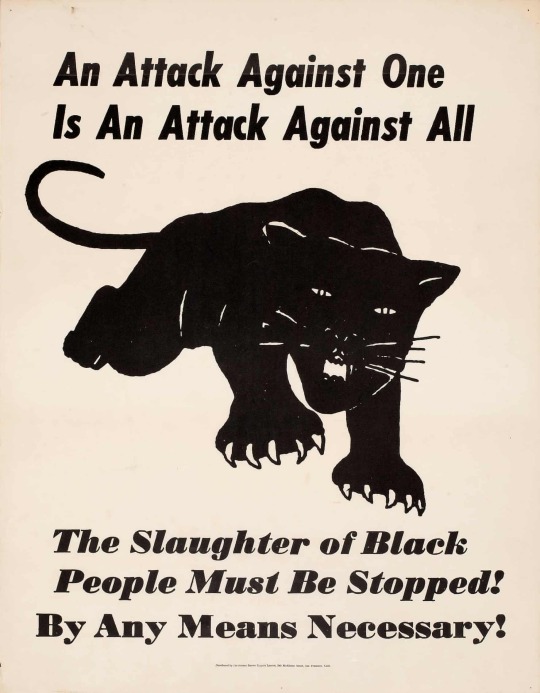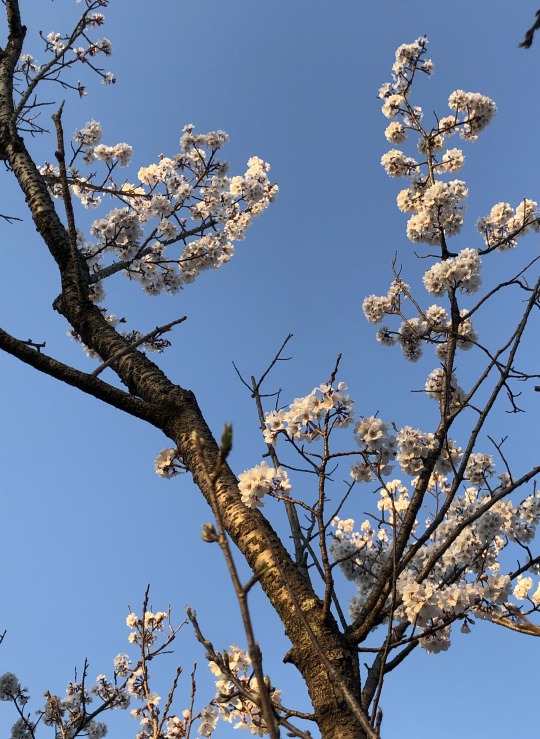#C. Berman
Explore tagged Tumblr posts
Text












Gillian Jacobs in Fear Street Trilogy, (2021).
#icons#gillian jacobs icons#fear street icons#fear street trilogy#fear street#c berman#ziggy berman#ziggy berman icons#coral#twitter icons#girls icons#icons without psd#icons sem psd#movies icons#moviesedit#horror movies icons#halloween icons
36 notes
·
View notes
Photo

Power to the people: the branding of the Black Panther party
An Attack Against One Is an Attack Against All, 1968 Designer Unknown
The history of the logo can be traced back to designer Ruth Howard, a member of the Atlanta branch of the Student Nonviolent Coordinating Committee where she learned how visuals could galvanize a community. In 1966, SNCC organizers in Lowndes county approached her to create the symbol. Howard originally designed a dove to express power and autonomy but it wasn’t well received. She eventually based it on the school mascot of Clark College, a local HBCU. Dorothy Zeller, a white Jewish woman, added whiskers and the black color
Photograph: The Merrill C Berman Collection
#the merrill c berman collection#black panther party#an attack against one is an attack against all#poster#activism#history#student nonviolent coordinating committee#lowndes county#georgia#ruth howard#designer#dorothy zeller#clark college
95 notes
·
View notes
Text
smth smth this genre of sadie sink





#sadie sink#stranger things#fear street#the whale#max mayfield#dear zoe#tess denunzio#all too well#c berman#christine berman#maxine mayfield
17 notes
·
View notes
Text

Gustav Klutsis Electrification of the Entire Country (Elektrifikatsiia vsei strany) c. 1920
Medium: Cut-and-pasted gelatin silver prints, printed and painted paper on paper with gouache, ink, and pencil
Dimensions: 18 5/16 × 10 13/16" (46.5 × 27.5 cm)
Credit: The Merrill C. Berman Collection. Acquired through the generosity of Alice and Tom Tisch, Jo Carole and Ronald S. Lauder, Sue and Edgar Wachenheim III, David Booth, Marlene Hess and James D. Zirin, Marie-Josée and Henry R. Kravis, Jack Shear, the Patricia Bonfield Endowed Acquisition Fund for the Design Collection, Daniel and Jane Och, The Orentreich Family Foundation, Emily Rauh Pulitzer, The Modern Women's Fund; and by exchange: Gift of Jean Dubuffet in honor of Mr. and Mrs. Ralph Colin, The Judith Rothschild Foundation Contemporary Drawings Collection, and the Richard S. Zeisler Bequest
Object number: 441.2018
Copyright: © 2023 Estate of Gustav Klutsis / Artists Rights Society (ARS), New York
Associated work: The Merrill C. Berman Collection at MoMA
Department: Drawings and Prints
#Gustav Klutsis#Electrification of the Entire Country#Elektrifikatsiia vsei strany#MoMA#Museum of Modern Art#Merrill C. Berman
3 notes
·
View notes
Text

@lcveblossomed: “ that’s a shit plan. ” (alice to ziggy)
black widow starters / accepting

"Oh, you have a better idea?" She doesn't have anything against Alice, but aggression is generally how she responded to just about everyone. Besides, right now, she's in a pretty shitty mood. Hence her current plan to cause problems around camp. Anything to catch her sister's attention.
7 notes
·
View notes
Text

"can't you at least try to be nice to tommy? he is always trying with you, even if you roll your eyes at him every time." if him being genuinely nice to her sister really counted as trying, since tommy was just nice to everyone. perfect guy and perfect boyfriend and all that. if only there were enough people around to actually appreciate it. "i'm serious, ziggy. i'm not saying you have to be best friends, but..." cindy trails off, sighing. "are you even listening to me right now?"

@wildhecrt - for ziggy ! starter call.
4 notes
·
View notes
Text
I correctly predicted so much in fear street but I somehow didn’t recognize Brita
#got sucker punched by the universe hitting IMDB going ‘why was C Bergman so recognizable?’#but my mystery powers were on point#BERMAN auto ffs
0 notes
Text
@cstarling
"skip this one." cindy demanded. something about her rotating playlist was normally a comfort she found herself squirming. "i mean, 'it seems you blend in with so many other ordinary things and people tend to pass you over cause you're not standing out'" she mimicked. "he's a felt frog, he's never felt that." cindy tries to laugh but it gets caught in her throat. like it's not quite funny, even to herself. deep down there's a hazy memory of her father singing it in their truck, whistling through the interlude, in the before of her life.
it's not easy bein' green by andrew bird / s.c.
#𝐢𝐧𝐭𝐞𝐫𝐚𝐜𝐭𝐢𝐨𝐧 . » c. berman — this is how i will love you when the world goes it’s wicked way#text#cstarling
1 note
·
View note
Text
転機の三月に
早いもので3月も終わりに近づいてきました。温暖化の影響か、年を追うごとに開花が早まっている桜が見ごろを迎えようとしています。ウクライナでの戦争が一年を超えて続いていることをはじめ、世界を覆い、人々の生を蝕む闇の深まりを感じさせる出来事の報せを耳にすることが多い今日この頃ですが、自然の生きものたちが明るさを増していく風景のなか、彩り豊かに生命を繰り広げていることが感じられる時季は巡ってきます。その様子に心が開かれるとき、少し力づけられる気がします。 新しい散歩道で見かけた桜 さて、この3月より福岡市の南部へ居を移しました。娘がこの地域にある高等学校に進学するのに伴い、家族と同居できるよう、また娘の通学の便がよくなるように、職場の近くから引っ越した次第です。大学へ通うのに時間がかかるようになりましたが、別れ別れの生活を余儀なくされている人々のことを顧みるなら、家族で暮らせるのはありがたい…

View On WordPress
#aesthetics#Antoine Berman#Asako Nagasawa#Bildwissenschaft#Charles Baudelaire#Daisuke Kamei#Dmitri Shostakovich#Gayatri C. Spivak#Image#Jacques Derrida#Michiyoshi Inoue#On the Threshold between Voice and Silence#Paul Celan#Seinan Gakuin University#Shakaibungaku#Songs from Lament#Takayuki Kawaguchi#The Kyushu Symphony Orchestra#The Task of the Translator#Walter Benjamin#Yuji Nishiyama#Yusuke Miyazaki
0 notes
Text

There's a small scoff at his response. "Any time," she responds sarcastically. At the very least, she always had that pessimism to offer, even if some people thought it was her just having a grim sense of humor. He's Sunnyvale—not even just Sunnyvale, but a Goode—so things would probably be just fine for him. As opposed to her and every other person in Shadyside. Still, there's a more genuine chuckle as he talks about Will. "Yeah, something like that." Her relationship with Cindy wasn't just on and off fighting, or clashing. Since Cindy had gone the "miss perfect" route, her older sister barely looked at her. And when she does, it's to scold her about something. Like she wasn't doing that stuff to try and get her sister to pay actual attention to her.

“Well that’s a terrifying though. Thanks for that Berman.” He teased. “Will and I? All the time. Mom says we’re like chalk and cheese - entirely different.” He supposed it was because he was burdened with the family secret and Will just got to live life carefree. “Why do you think he balked when I threatened to tell our mom when he was acting as Sheila’s goon?” He huffed a small laugh. “Though I think fighting with our siblings is just a natural part of life. We love them, but we’re our own people, you know? Different responsibilities that we have compared to them. There is always going to be things that we clash over.”
8 notes
·
View notes
Photo

Japan, 1988, Yūsaku Kamekura
This poster was made for the Japan Graphic Designers Association (JAGDA) that played a crucial role in the development of Japanese poster design after the war. The letters spelling ‘Japan’ at the center of this composition reference contemporary technological advances while paying homage to traditional Japanese art forms
Photograph: The Merrill C Berman Collection
#yusaku kamekura#artist#art#illustrator#the merrill c berman collection#poster#japan graphic designers association#japan
19 notes
·
View notes
Text










s t a r t r e k d e e p s p a c e n i n e created by rick berman, michael piller [heart of stone, s3ep14]
'Yesterday, I completed the Ferengi Attainment Ceremony. I'm an adult. According to Ferengi by-laws, section one oh five, subparagraph ten, upon reaching adulthood, Ferengi males must purchase an apprenticeship from a suitable role model. I choose you.' - nog
#star trek#star trek deep space nine#deep space nine#rick berman#michael piller#ds9 season 3#deep space nine season 3#ds9 Heart of Stone#Heart of Stone#lot: st ds9 season 3 ep 14/26 (ep 60/176)#avery brooks#aron eisenberg#Benjamin Sisko#Nog#Purchasing an Apprenticeship#latest ds9 posts
74 notes
·
View notes
Text

@lcveblossomed: i know you snuck out last night. (alice to ziggy)
into the spider verse prompts / accepting

"Yeah? And?" Sneaking out is far from the worst thing Ziggy's done since arriving at Nightwing. She wants some time to wander the campgrounds without being bothered by someone, sue her. She hadn't even done anything well, she picked some locks and used equipment without permission, but again, she could have done worse. "What? You gonna tell on me? I thought my sister was the snitch."
3 notes
·
View notes
Text

"you don't actually believe in all that, do you? the so-called shadyside curse?" what cindy was really asking was if tommy believed the curse actually affected everybody from there, in one way or another. it was no secret that the universe seemed to be against shadyside for some reason, but cindy that was just the way it was for some places. people couldn't choose where they were born the same way they couldn't choose family. "sorry, my sister's just been driving me crazy with it lately. she's obsessed."

@offier - for tommy ! starter call.
1 note
·
View note
Text
Fun Fact: Many Frogs get through Winter... Underwater
Many people have heard of the legendary frogs that are able to freeze solid and survive the winter. (if not, I did write a whole post about it. so.)
This post is not about those frogs. Though amazing, they are the exception rather than the rule. It is much more common for frogs to overwinter in other ways!
The most common strategy to survive winter is to simply live somewhere that does not have winter!

(you’ll notice there are more species of frog closer to the equator. this is not a coincidence. image source)
But some frogs don’t HAVE that luxury! SOME frogs have to deal with a winter that lasts close to 6 entire months!

(im suffering)
The majority of frogs that face this threat survive by either digging underground, or by finding a permanent body of water and just... chilling 🥶😎.

(I will not apologise for my excellent jokes. image source)
Ice is less dense than water, which is why ice burgs exist, among other things. Water is at its densest around 4°Celcius. The 4°C sinks, which means that, in the wintertime, the unfrozen bottom of the pond will (generally) not get colder than 4°C.
Additionally, frogs are ectotherms, aka “cold-blooded”, and as their body temperature drops, so too does their metabolism. This makes it so the frogs can go a long time without food, and also allows them to get by without much oxygen.

(i love them. image source)
Frogs still need some oxygen, though, so it’s a good thing that frogs are able to absorb oxygen through their skin, just like most amphibians (all amphibians? i can’t think of an exception, but there are so many frog species that I don’t want to commit to a big word like “all”).
Generally, they’ll stay at the bottom of the pond, in a spot that has enough water flow to provide sufficient oxygen for the frogs’ diminished metabolic needs! They generally don’t bury themselves in the mud, though. That part of the pond is nearly devoid of oxygen, and also where the turtles are hibernating!
Here are some pictures of frogs overwinter underwater:

(image sources, in order: mink frog, Green Frog, Bull Frog, fire-bellied toad, marsh frog, siberian wood frog, northern Leopard Frog.)
was this an excuse to show y’all a bunch of pictures of frogs that I like? Yes.
(also please note: second last frog is a siberian wood frog, NOT an american wood frog, and they DO overwinter underwater (Berman et al. 2019). They’re special because they can survive months with very little oxygen, or maybe even no oxygen at all! Good for them 😊)
This has been Fun Fact Friday, letting you know that when the frog gets cold, the frog goes to bed for 6 months. Honestly same.
Sources under the cut!
Berman, D. I., Bulakhova, N. A., & Meshcheryakova, E. N. (2019). The Siberian wood frog survives for months underwater without oxygen. Scientific reports, 9(1), 1-7. [PDF]
Jenkins, C. N., Pimm, S. L., & Joppa, L. N. (2013). Global patterns of terrestrial vertebrate diversity and conservation. Proceedings of the National Academy of Sciences, 110(28), E2602-E2610. [PDF]
How do frogs survive winter? Why don't they freeze to death? Scientific American: https://www.scientificamerican.com/article/how-do-frogs-survive-wint/
#fun fact friday#fun fact#science#frogs#frog#biology#sciblr#science side of tumblr#STEM#adhd in STEM#zoology#winter
509 notes
·
View notes
Text
𝐇𝐎𝐖 𝐃𝐎 𝐘𝐎𝐔 𝐍𝐄𝐄𝐃 𝐓𝐎 𝐁𝐄 𝐓𝐎𝐔𝐂𝐇𝐄𝐃?
cautiously. your teeth are bared, as they have been, your jaw aching for so long as growls slip free. you always have to defend yourself. you lash out in fear. you need someone who does not shrink back... a hand falling slowly to your shoulder, however briefly, in a reminder that you do not have to lunge. there is no danger here, now.
#𝐨𝐨𝐜 . » dash games — buzzfeed tell me what kind of bread i am#𝐬𝐭𝐮𝐝𝐲 . » c. berman — what the fuck are perfect places anyway
0 notes